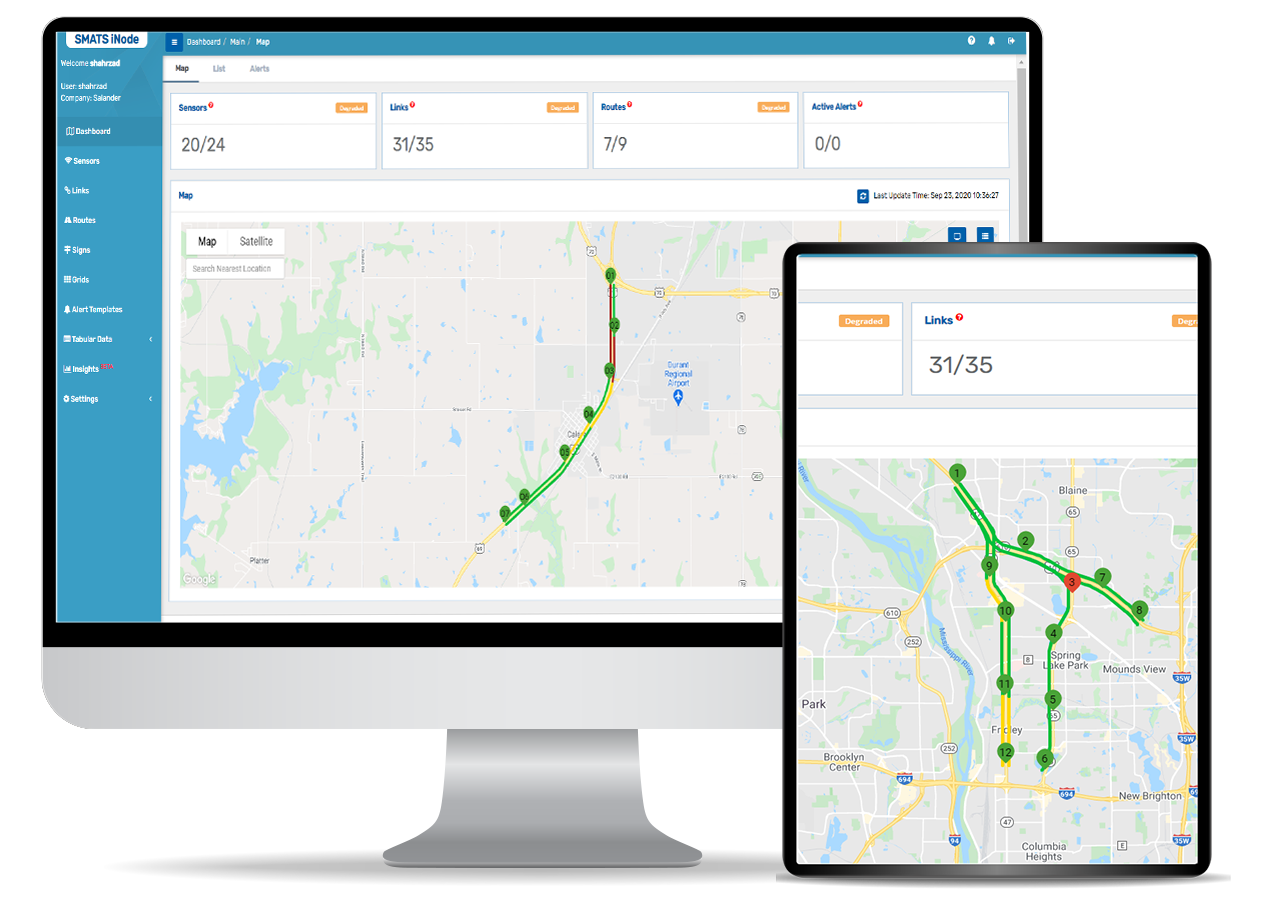Ports Traffic Management
SMATS Ports Traffic Management Solution within iNode™ is used by Port Authorities to boost traffic capacity and improve service quality overall. By managing the flow of trucks to and from the port terminals, it opens the door for more efficient operations and a reduction in traffic congestion around the ports and cargo terminals. With a combination of our various products, we can provide analytics data on each vehicle entering/exiting the port, as well as the movement of vehicles inside each terminal of the port.
Each Port Authority personnel can use the iNode™ to access the following analytics data:
- Trucks gate wait times
- Trucks in-terminal turn times
- What route trucks use when they enter
- Pick up and drop off times
- Classification of port vehicles to separate Freight Trucks and Terminal vehicles
Ports Trucking Queue
With the significant costs existing at nearly all ports due to delay times, port authorities must find a way to manage performance and efficiency to maintain as well as increase capacity.
By installing SMATS sensors at various locations inside the port, inside the terminals, and around the port, port authorities can actively measure and predict delays with iNode™ analytics. By announcing the expected wait time in real-time on websites or through cell–phone applications, truck drivers can plan their trip to experience minimum delay, and the scheduling department can optimize its service rate to minimize the delay.
Truck in–terminal gate wait times and turn-times are valuable information for trucking companies to plan their visits to ports terminals for goods loading.
“SMATS truck traffic wait-time monitoring allowed us to better measure and manage
our traffic at the terminal gates. Real-time data has provided visibility where we had
none and is helping us to better service the trucks. The system is easy to deploy and
the SMATS team provided great technical expertise and support.”
Analytics Data
One of the key attributes of our platform is the ability to generate analytics data based on algorithms for developing various traffic models. Armed with predictive data, port authority operations personnel can position trucks and resources proactively to prevent queues and keep traffic moving.
Utilizing this data, the port authority team can develop schedule forecasts and capacity models for each of the terminals inside the port, then share it with the terminal operators to improve efficiency and optimization of the loading and unloading process.
By comparing forecast data for truck traffic with real-time data captured from our sensors inside the port, operations managers can also improve future forecasts.
Our main goal is to provide proper actionable analytics data so that the port authorities can improve their efficiency and increase capacity while enabling their Terminal Operators to be just as efficient with their trucking operations.
Integrations
Based on our iNode open architecture, we can integrate our data with the following:
- Existing appointment and scheduling systems
- Trucker appointment systems
- Terminal operating systems (scheduling, containers OCR, etc.)
- Automatic Identification System (AIS) for vessel tracking
- Variable Message Signs (VMS) to share information with truck drivers on the way to the port.
How it Works
By detecting Bluetooth and Wi-Fi signals emitted from phones or other smart devices in the trucks or our SMATS IoT Beacons (BLE tags), iNode™ can measure various wait-times for different trucks activities.
Using SMATS IoT Beacons, we are additionally able to track and detect the movement of any asset of interest within Port Authority as well as the Terminals.
iNode™ + Sensors

